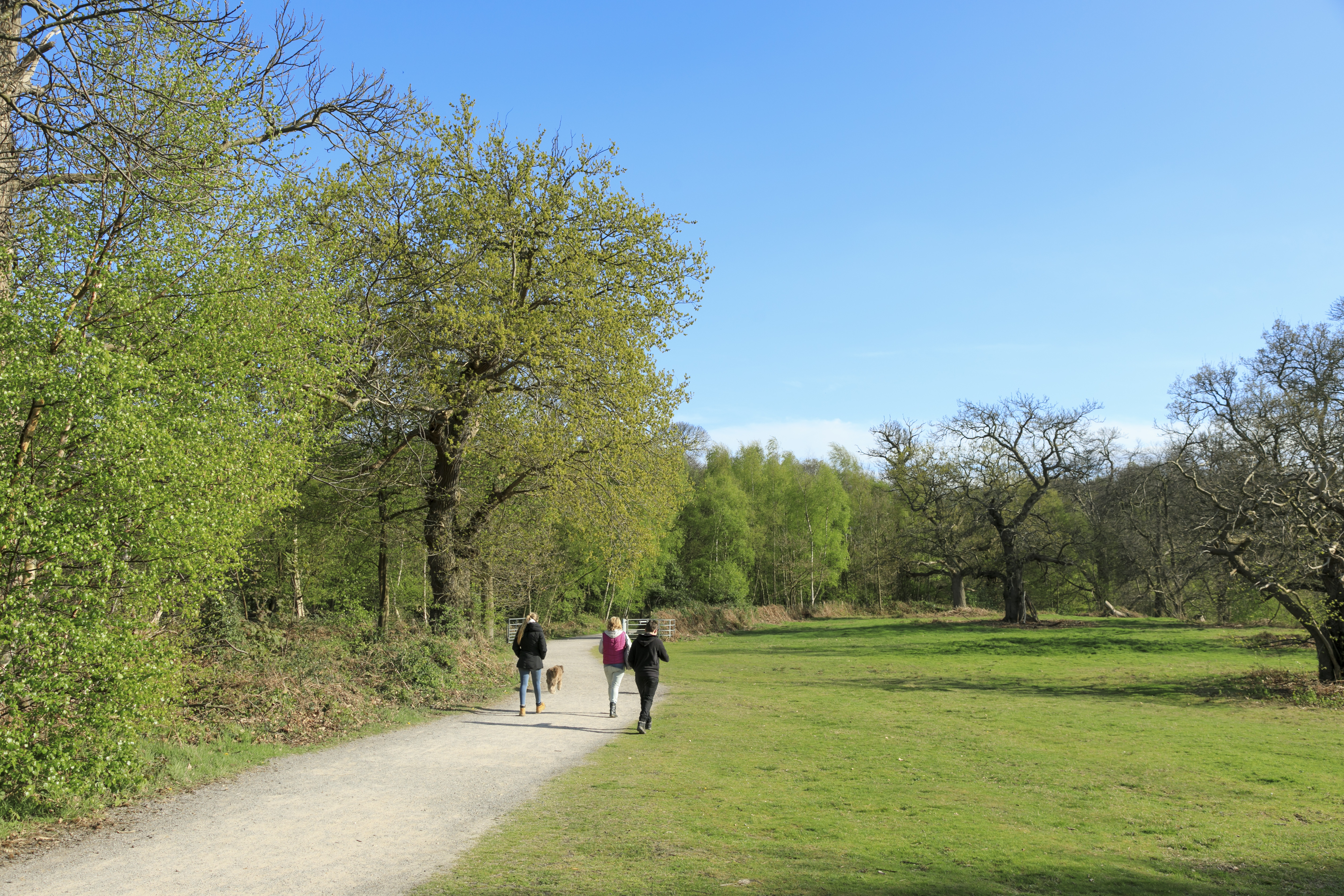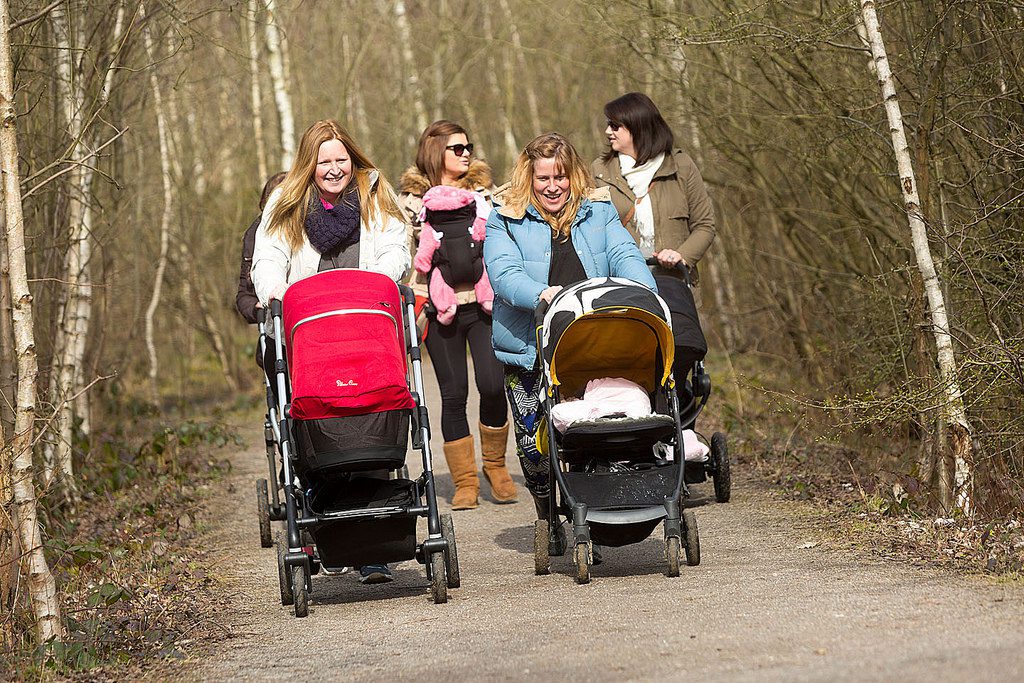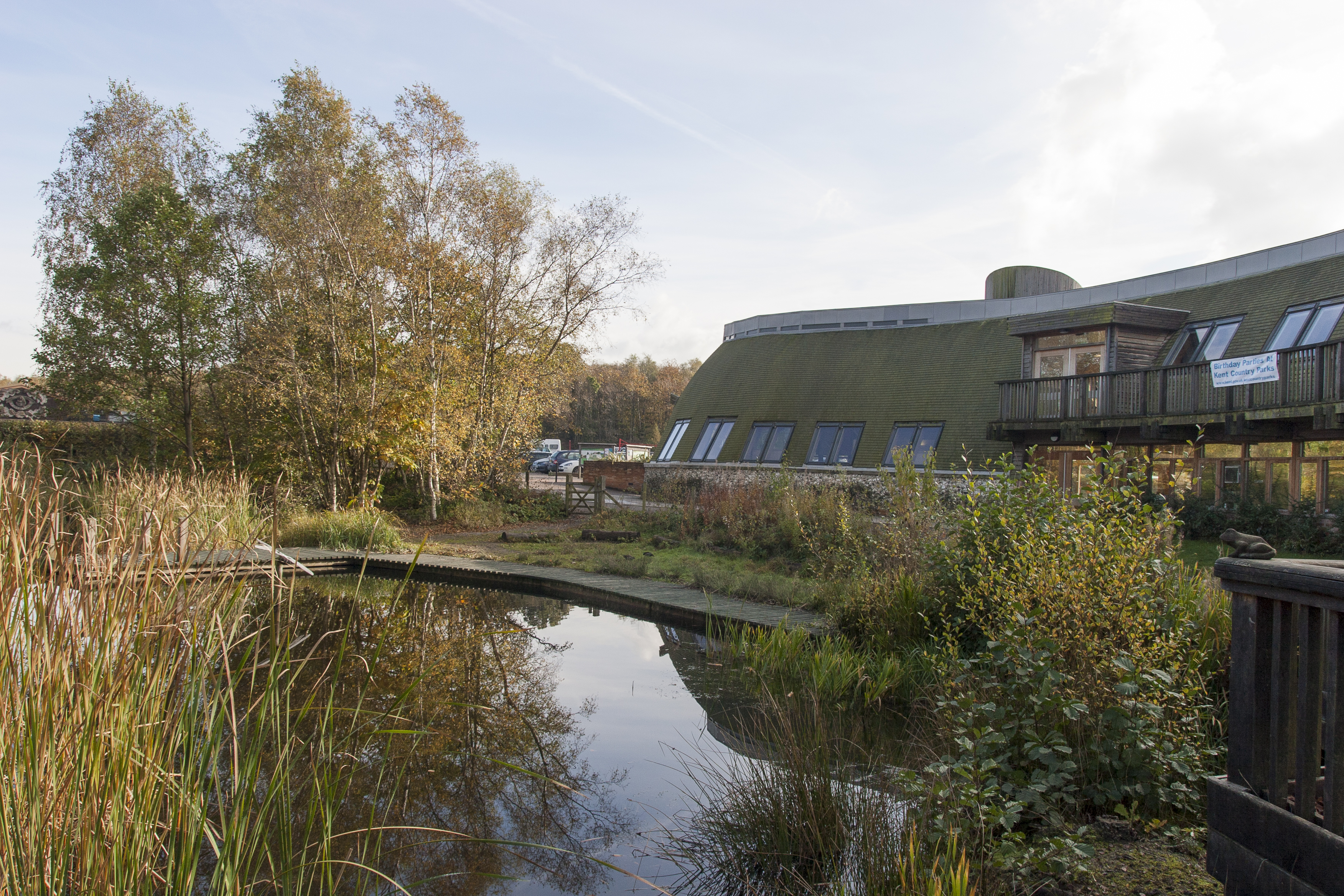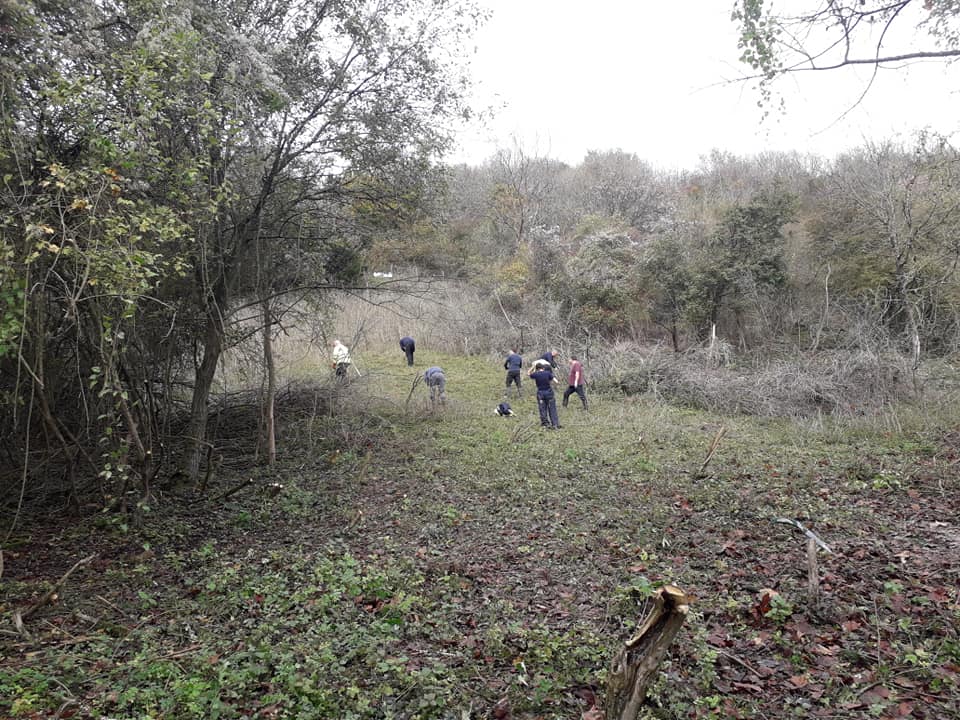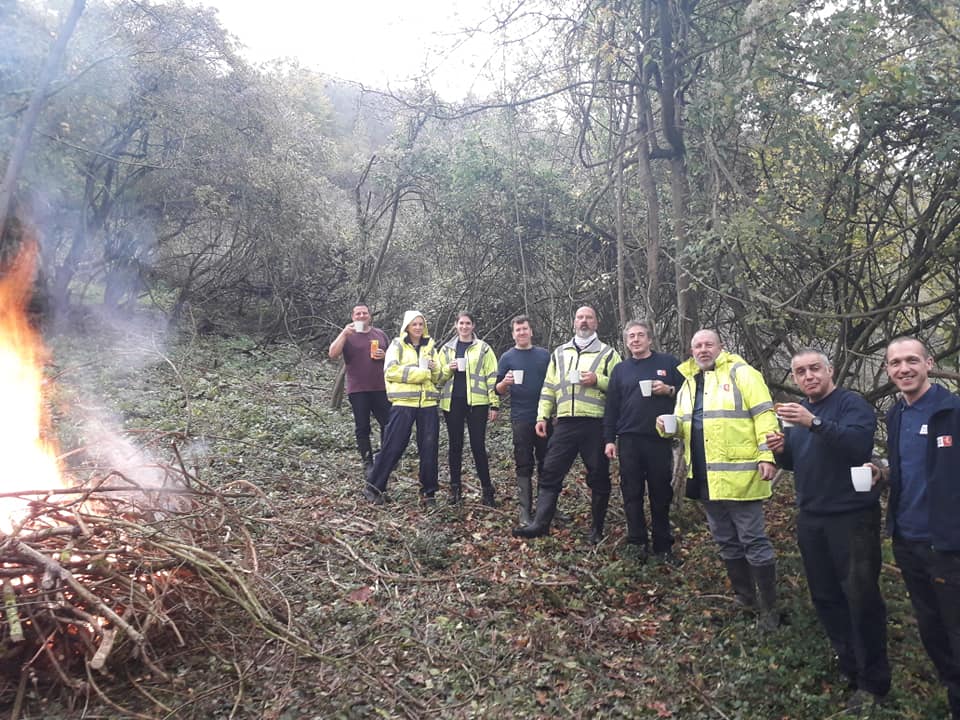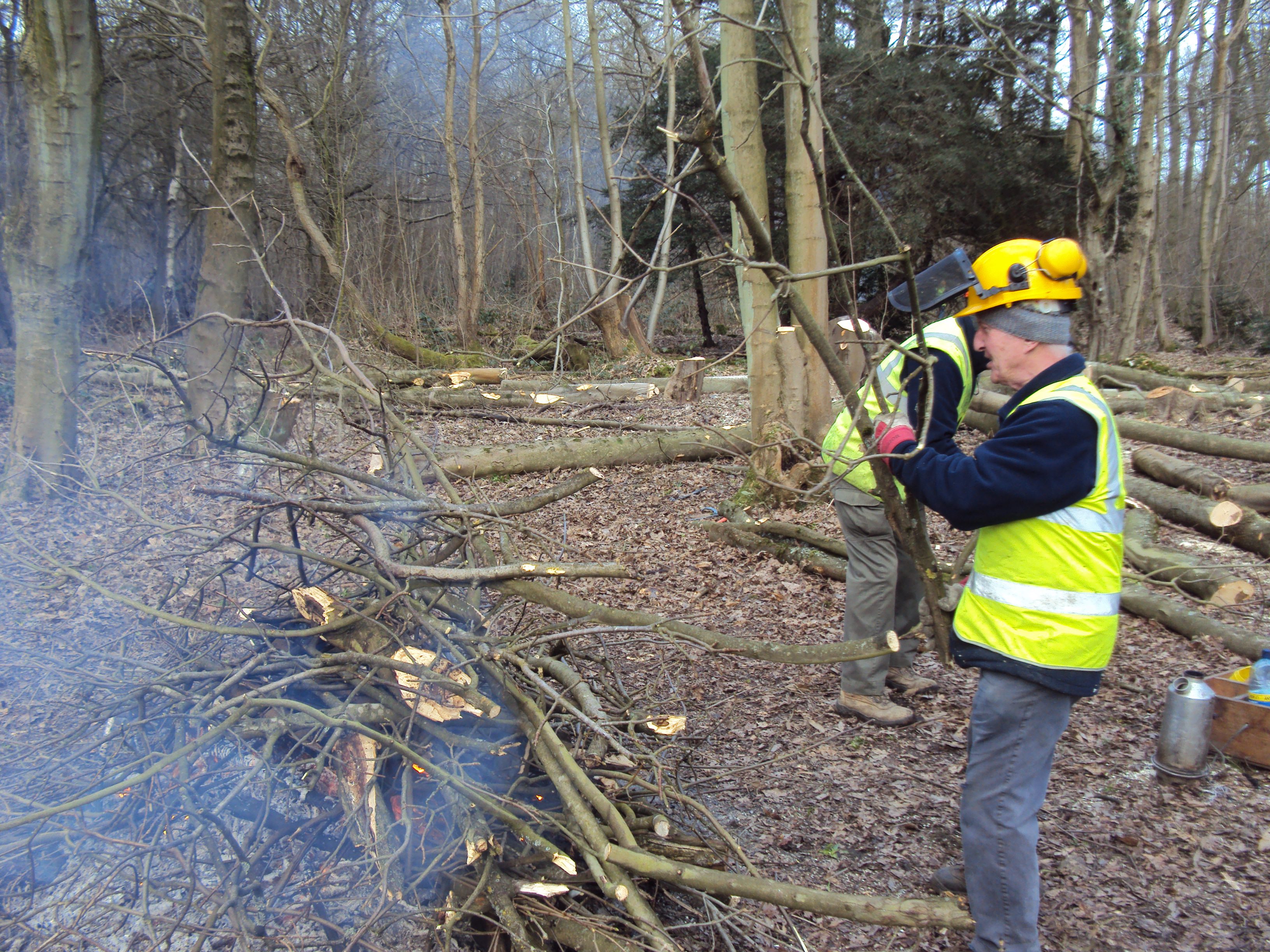Winter in the park

6th November 2019
Tim Bell, head ranger at Shorne Woods Country Park tells us about the work the rangers and volunteers do across the country parks to get the parks ready for winter and how you can support the sustainable growth of Kent Country Parks too.
Autumn and winter are a lovely time of year to visit the Country parks and see vibrant colours amongst the trees as leaves change with splendid displays of fungi to be found in the woods. As the season’s turn, new views transpire and a walk in a country park on a frosty day can provide fantastic opportunities to see natural art in the form of intricate spiders’ webs, frost laden tree stumps and crisp views of the countryside. Whilst you are out enjoying the parks, look out for the ranger teams carrying out their conservation work and do stop by to say hello!
Autumn and winter are the seasons that most of the conservation work is carried out in the parks. This is to avoid harming nesting birds and small mammals. These delicate habitats are bursting with life in the spring and summer so it’s essential that conservation work doesn’t harm them. The ranger teams are out in all weathers carrying out woodland work and tasks on the grassland areas. Some of our sites are Sites of Special Scientific Interest and across Lullingstone, Shorne and Trosley we have an internationally important collection of over 400 veteran trees that all need managing to ensure they remain in favourable condition.
Sustainable Volunteering
At Shorne Woods, Trosley and Lullingstone Country Parks, the rangers carry out coppicing of Sweet Chestnut. Coppicing is a sustainable form of woodland management as once we have cut the trees they will regrow from the stump and in 18-20 years we will be able to cut them again. This allows healthy woodland to grow and creates a diverse age structure of the trees which provides great habitats for wildlife such as invertebrates and small mammals. The coppicing allows light into the woodland encouraging wildflowers such as bluebells and anemones to flourish in the springtime.
All timber that we cut is either used in biomass boilers at Shorne Woods and Trosley to heat the visitor centres or sold to the public as seasoned firewood from the visitor centres at Shorne, Lullingstone and Brockhill Country Parks. The parks staff carry out all the woodland work including felling, extracting and processing so the timber has never travelled more than a mile from where we cut it thus reducing the carbon footprint of the work. All money generated from sales helps to offset the parks running costs and will help us to manage the parks financially sustainably in the future. The public knows they are supporting their local park by purchasing wood from us and importantly know the source of the fuel they are using.
The team also remove invasive species over the winter such as Sycamore and Rhododendron to help promote native species to thrive and naturally regenerate. Invasive species can suffocate the woodland if left unmanaged and prevent the native species; Oaks, Beeches and Hornbeams from re-growing.
How you can Get Involved
The ranger teams could never achieve all the conservation objectives without the help of volunteers. There are weekly volunteer groups at Shorne, Trosley and Brockhill that people of all ages can get involved with, just call the sites and they will put you in touch with the right people. There are opportunities for all, and everyone is welcome. As part of the Kent Year of Green Action, we have had whole teams from KCC highways, finance and libraries come out and spend the day with us clearing rhododendron from the parks and they have had fun as a team while also helping the parks do some vital conservation work so it’s a win-win.
Popular articles
Walking the Pilgrims Way
Experience the beauty of walking across the Kent Downs NL through the…
Inspiring Pub Walks In Kent
With spring just around the corner, now is the ideal time to…
Walk Leader Volunteer Opportunity
Discover how you can become a walk leader in Medway! Uncover the…

